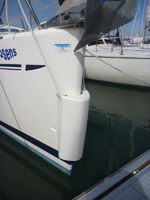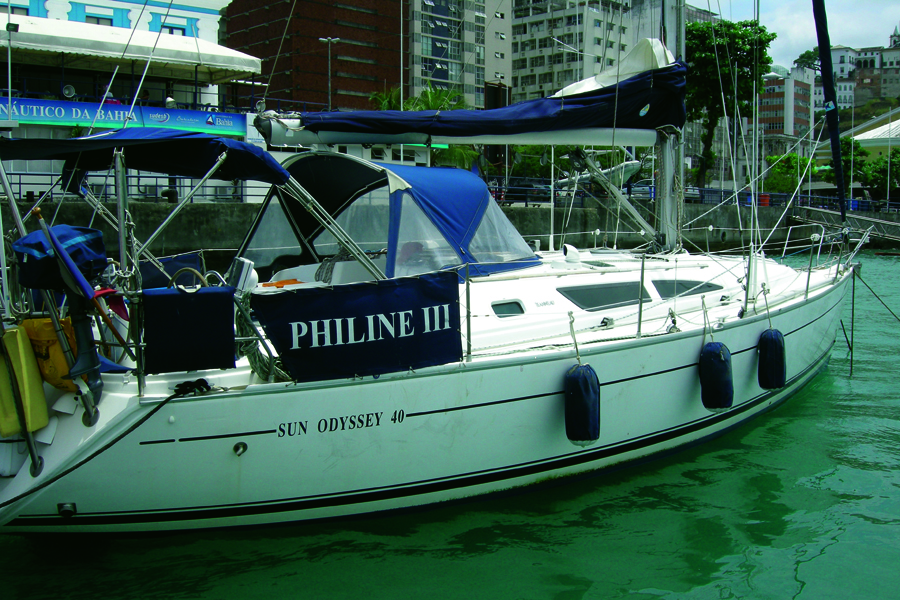Hull protection
All shapes
There are all forms of fender, the cylindrical, to the lens shaped, through to flat and round… Faced with this range, it is often difficult to make a choice and it is tempting, to take a selection, but the cylinders are undoubtedly the most effective.

Boat length Fender diameter Fender Number Supplementary Round fenders 4 to 6 m 10 to 12 cm 6 15 to 20 cm 6 to 8 m 15 to 20 cm 8 28 cm 8 to10 m 20 to 25 cm 8 35 cm 10 to 14 m 25 to 35 cm 10 45 cm |
|


Flat defences
Thanks to their semi-rigid polyethylene foam structure these fenders neither roll nor rise. They protect a large area and do not mark the hull. Space-saving, especially when stored, they can also be used, like their cousins, for the same type of work. It is advisable to use these fenders with a protective shell because they may scratch the hull over time.
Ball or spherical defences
The spherical fender, if cumbersome, remains a good instant defence at dock, or to ward off danger. This fender is also very useful for protecting a tulip shaped bow.
The lens shaped fender
This shape protects but tends to rise. It is well suited for a temporary mooring along the quay or against other boats.
Specific Fenders
There are many forms of fender to protect all parts of the hull. V-shaped, they protect the stem. At right angles, they will protect the rear corners of the boat.
Ball or spherical defences
The spherical fender, if cumbersome, remains a good instant defence at dock, or to ward off danger. This fender is also very useful for protecting a tulip shaped bow.
The lens shaped fender
This shape protects but tends to rise. It is well suited for a temporary mooring along the quay or against other boats.
Specific Fenders
There are many forms of fender to protect all parts of the hull. V-shaped, they protect the stem. At right angles, they will protect the rear corners of the boat.
Tips
Always have a lens shaped or round fender handy in a situation where you may quickly encounter land or another vessel.
Always have a lens shaped or round fender handy in a situation where you may quickly encounter land or another vessel.
Directions for use
Fenders and other protectors must be attached, preferably to the base of stanchions, on the toe rails or lateral cleats. Set them to cover the freeboard. They should be regularly cleaned with a suitable product (see, “Painting and maintenance,” section) to prevent stains from setting, dirtying your hull and those of your neighbours (avoid acidic products which attack the fender plastic.) We can also provide washable covers. This allows them to match the colour of the boat. By changing the covers every season, you start every time with a new set of fenders!
Professional Advice
“Fenders are frequently attached with a clove hitch. If you are not confident of your seamanship, you can instead equip yourself with rapid fitting hooks.”
“Fenders are frequently attached with a clove hitch. If you are not confident of your seamanship, you can instead equip yourself with rapid fitting hooks.”
